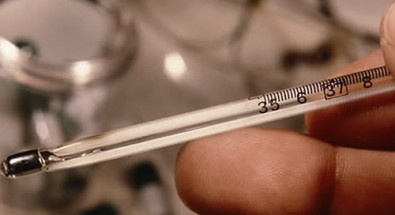Teeth Extractions
There are times despite you and your dentist’s best efforts, teeth may not be able to be saved and will need to be extracted. There are many reasons why your dentist will recommend extractions for your teeth. The two most common reasons are tooth decay and periodontal disease. The tooth may be so severely decayed that they are unrestorable or they have such extensive periodontal disease (gum and bone disease) that they cannot be maintained. Other teeth may need removal because they are poorly positioned in the mouth (such as impacted teeth) or in preparation for orthodontic treatment.
The extraction of a single tooth can lead to shifting of your other teeth, problems chewing and can have an impact on your dental health.
To avoid these complications, Drs. Aidelbaum and Chen will discuss alternatives to extractions as well replacement of the extracted tooth.
OFFICE VISIT
Your dentist may refer you to Pacific Coast Oral and Maxillofacial Solutions for a number for reasons regarding dental extractions. Some patients are extremely anxious and require sedation and anesthesia for the extractions. Some teeth are difficult to remove and oral surgeons are experts when it comes to extraction of teeth. Other patients have an extensive medical history that require management by an oral surgeon in addition to the dental procedure. If you desire implants, you may be referred here for the extraction in order to save as much bone as possible for your future implant. Dr. Aidelbaum and Dr. Chen may even offer you other options such as immediate bone grafting to preserve the bone for the implant or even placing the implant at the same time as the tooth extraction (immediate implant placement).
Dr. Aidelbaum and Dr. Chen also see many patients who have had complications as a result of a tooth extraction. This may be a tooth that was unable to be extracted by a dentist, a tooth displaced into another area, or severe anxiety preventing the extraction from being completed.
You surgeons will explain to you all aspects of the procedure including the indications, the procedure itself, and post-op recovery expectations. They will also review with you what type of sedation and anesthesia is required for your procedure should you desire.
THE EXTRACTION PROCESS
At the time of extraction, the doctor will need to numb your tooth, jawbone, and gums that surround the area with a local anesthetic.
During the extraction process, you will feel a lot of pressure. This is from the process of firmly rocking the tooth in order to widen the socket for removal.
You feel the pressure without pain as the anesthetic has numbed the nerves stopping the transference of pain, yet the nerves that transmit pressure are not profoundly affected.
If you do feel pain at any time during the extraction, please let us know right away.
If you are having the extractions done under intravenous sedation or general anesthesia, then you will not be aware of the entire surgical process. It will be like you drifted off to sleep and then wake up in the recovery room and everything is already done!
Sectioning A Tooth
Some teeth require sectioning. This is a very common procedure done when a tooth is so firmly anchored in its socket or the root is curved and the socket can’t expand enough to remove it. The doctor simply cuts the tooth into sections then removes each section one at a time.
This also preserves bone around the tooth.
After Care
Bleeding
Some bleeding may occur. Placing a piece of moist gauze over the empty tooth socket and biting down firmly for 45 minutes can control this.
A blood clot will form in the empty socket. This is an important part of the healing process and you must be careful not to dislodge the clot.
Avoid rinsing or spitting for 24 hours after the extraction.
Avoid use of a straw, smoking, or drinking hot liquids.
Swelling
If swelling occurs, you can place ice on your face for ten minutes and off for 20 minutes. Repeat this cycle as you feel necessary for up to 24 hours.
Pain & Medications
If you experience pain, you might use non-prescription pain relief medications such as acetaminophen or ibuprofen. You can also use the pain medications that were prescribed by your surgeon.
Eating
For most extractions, make sure you do your chewing away from the extraction site. Stay away from hot liquids and alcoholic beverages for 24 hours. A liquid diet may be recommended for 24 hours.
Brushing & Cleaning
After the extraction, avoid brushing the teeth near the extraction site for one day. After that you can resume gentle cleaning. Avoid commercial mouth rinses, as they tend to irritate the extraction site.
Beginning 24 hours after the extraction, you can rinse with salt water (1/2 teaspoon salt in a cup of warm water) after meals and before bed.
Dry Socket
Dry socket is when a blood clot fails to form in the socket where the tooth has been extracted or the clot has been dislodged and the healing is significantly delayed.
Following the postoperative extraction instructions will reduce the chances of developing dry socket. Dry sockets manifest themselves as a dull throbbing pain that usually doesn’t appear until three to four days after the extraction. The pain can be moderate to severe and radiate from the extraction area. Dry socket may cause a bad taste or bad breath and the extraction site appears dry.
Drs. Aidelbaum and Chen will adjust your medications or apply a medicated dressing to the dry socket to soothe the pain.
Healing
After a tooth has been extracted there will be a resulting hole in your jawbone where the tooth was. In time, this will smooth and fill in with bone. This process can take many weeks or months. However after 1- 2 weeks you should no longer notice any inconvenience.
Replacing Teeth with Dental Implants may be an option.

